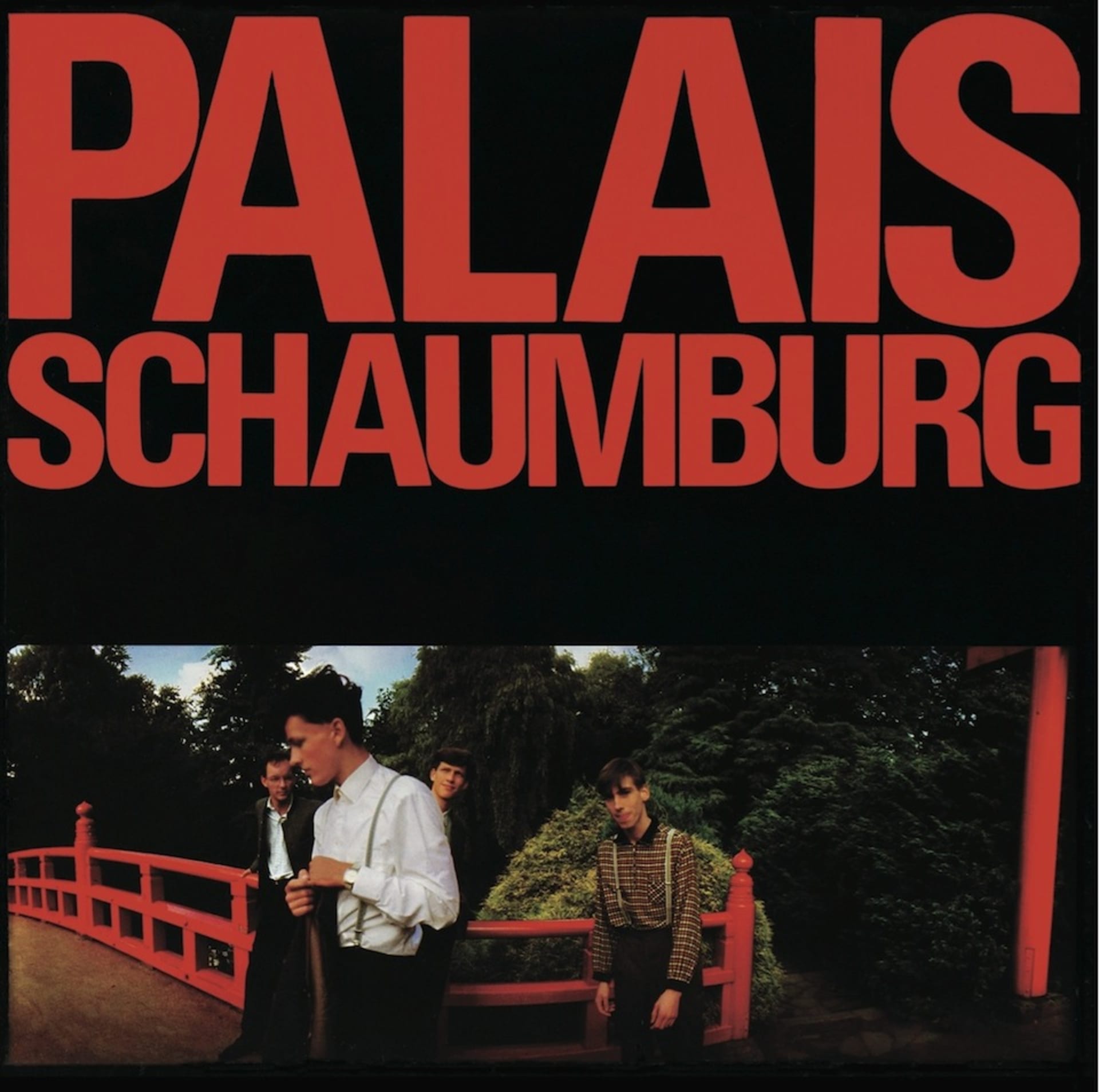
Alt Welle Ist Neu Welle: Alfred Hilsberg recommends Palais Schaumburg’s Palais Schaumburg
Alfred Hilsberg is a German music journalist and founder of the influential label ZickZack, which released music from the likes of Abwärts, Die Krupps, Ein- stürzende Neubauten, Palais Schaumburg, Die Tödliche Doris and FSK. He also coined the term “Neue Deutsche Welle”, (“New German Wave”). He currently lives in Hamburg.
Palais Schaumburg’s debut album from 1981 is not just a simple re-release. For the first time it includes all tracks previously released on 7-inch and compilations on my Hamburg-based ZickZack label, as well as some live recordings. Especially with the early, rough, energetic tracks and album artwork by painter Albert Oehlen (for the “Rote Lichter” single) the band established themselves almost immediately as one of the most innovative and influential bands from Germany. For those with mediocre taste, Palais Schaumburg was considered too “intellectual”. For me, the music is as exciting today as it was when I first heard it in 1980, even if the live recordings here don’t really come close to capturing the band’s energy in concert, and even though the original recordings weren’t handled properly in post-production.
For sure, when the band first appeared on the scene, there was an incredible desire in Germany to hear something new, because in the mid to late seventies there was a serious musical vacuum in this country. Krautrock and Kraftwerk only partially filled the gap. That started to change with the arrival of punk, which was a breath of fresh air, particularly when the Einstürzende Neubauten first came out. The Neubauten were determined to make new music and break with previous traditions, but with their “anti” orientation, they were still somehow connected with the traditions they supposedly rejected. They also still wrote “songs”, albeit with a very different approach and purpose. Palais Schaumburg on the other hand, was something else entirely.
People often emphasize that there was something particularly “German” about Palais Schaumburg, but that’s not an argument I would make. The band was never interested in placing Germany or, God forbid, “Germanness” at the forefront of pop music. Of course they had their idols, which surely included German expressionists and Dadaists from the twenties and thirties, as well as avant-garde composer Paul Hindemith, who originally wrote the band’s hit, “Wir bauen eine neue Stadt”. But I also heard a tenuous connection to American avant-rock like The Residents or Devo, as well as to dub and disco. These were all influences the band masterfully reassembled in their own way, as on standout tracks like “Gute Luft” or “Deutschland kommt gebräunt zurück”. And the timing was perfect, because, to use a phrase from then chancellor Helmut Kohl, German music at the time was a “blooming, spring-like landscape”—fitting for a band who named themselves after his official residence in a gesture of radical appropriation.
Chris Bohn mentions in the liner notes that the combination of Palais’ incredibly tight rhythm section and layered blend of synth, guitar and trumpet was truly unique. To me, it’s important to stress that this is a result of the fact that these were four individuals of equal creative prowess. Still, Holger Hiller and Thomas Fehlmann properly stood at the helm. As a lyricist, Hiller is not to be underestimated, particularly in relation to the words’ political undertones. Unlike German bands like Slime from Hamburg or Male from Dusseldorf, where it was more about yelling punk slogans and working with clichés, Hiller used incredibly imaginative images to describe what wasn’t working in German society—words taken from postcards or newspaper headlines, reinterpreted as cut-ups and reassembled into poetry.
I can’t say yet exactly how I feel about how the more live and authentic sound quality of the original has suddenly disappeared. On the one hand, the remaster-
ing helped bring out structure and detail of jazzier tracks like “Eine Geschichte”. My only fear is that that the more category-oriented listening habits of today’s younger audiences might not be able to pick up on something that falls between them all. Grace Jones said that when she heard them for the first time, the U.S. wasn’t ready for music like that. Hopefully they and the rest of world will be now. ~
This piece appears in the latest issue of Electronic Beats Magazine.
Published January 26, 2013. Words by Alfred Hilsberg.
